

Smart Gardener
Cold Weather
What does it mean for plants?
The temperatures have been slowly dropping and sporadic frost has put the brakes on annuals, blackening their leaves or simply causing entire plants to wilt. Not to worry—there are things we can do to protect trees and shrubs and extend the last harvest as we move closer to winter.
Frost or Freeze?
The typical average date for the first fall frost in the greater Chicago area is October 15. In some years, the first frost happens in September or as late as November. Frost can form on the ground on clear, calm nights even though an outdoor thermometer may register in the mid- or upper 30s Fahrenheit. However, the same temperature conditions on a cloudy or windy night may not yield frost.
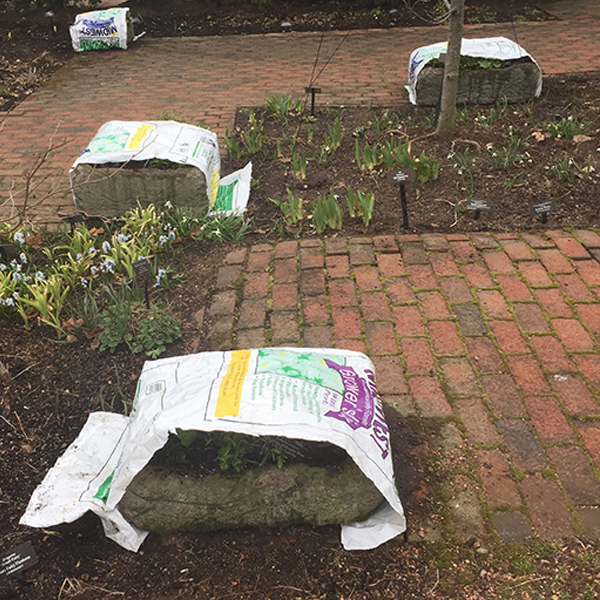
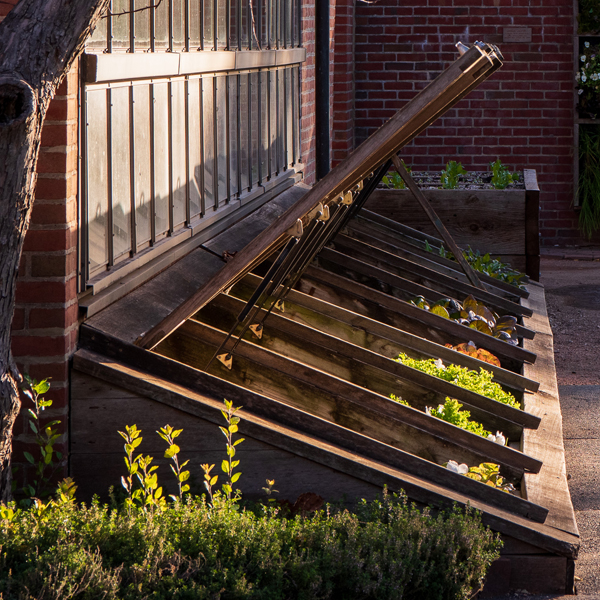
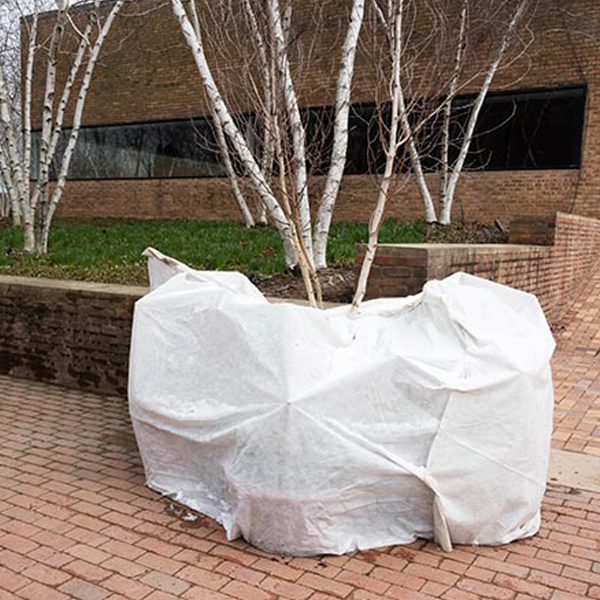
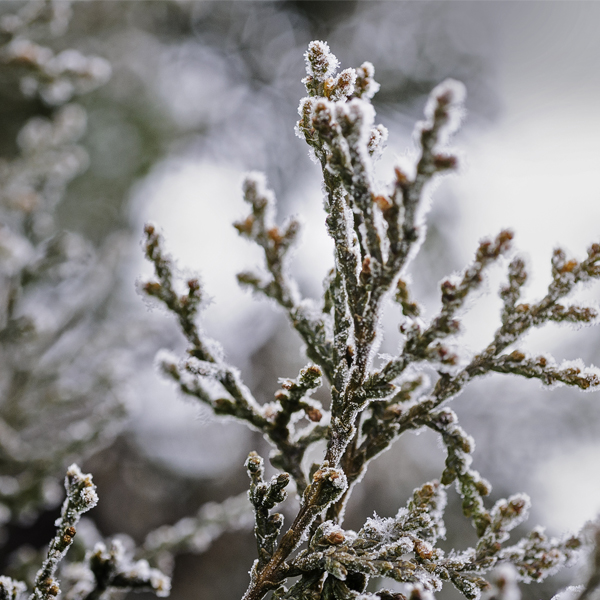
Covering Plants
For those gardeners who have late-season edibles like swiss chard, lettuce, spinach, beets, brussels sprouts, or cabbage, you can protect them from freezing with a cover. Use frost cloth (available at some big box stores, garden centers, and online), cardboard boxes or large cartons, or a sheet or blanket. The air temperature around covered plants can be 3 to 7 degrees warmer than the actual temperature. Cover plants in the late afternoon to take advantage of the soil’s heat before it chills at night.
Cold Frames
A useful season-extender is the cold frame, which you can see in the Regenstein Fruit & Vegetable Garden. Cold frames are simply shallow boxes often sunk partially into the soil. They are typically made of wood, cement blocks, or hay bales, and covered with a lid—a sheet of clear glass, plastic film, or similar material. Cold frames are useful for protecting leafy greens and root vegetables for a late fall harvest.
Protecting Trees and Shrubs
Frost cracking occurs on the trunks of young trees when cold-weather temperatures fluctuate widely. The vertical cracks are caused by the expansion and contraction of a thin layer of bark. During the day, the sun warms the bark, which then rapidly cools with cloud cover or nightfall. Wrapping the trunk with tree wrap (burlap or paper tape) during the winter—or anytime when night temperatures reach freezing—can help prevent frost cracks. (Remove the wrap in spring.)
Protect tree trunks from hungry rabbits by securing 12 to 16 inches of hardware cloth in the soil about 3 inches away from the trunk. If deer visit your garden, deter them from eating twigs or rubbing antlers by placing snow fencing or several stakes around trees and shrubs.
Broadleaf evergreens like boxwood and rhododendrons can benefit from an antitranspirant spray used on the leaves. Throughout the winter, plants lose moisture, especially on sunny days. Antitranspirant products create a waxy layer that locks in moisture that would otherwise evaporate during harsh winter conditions and drying winds.
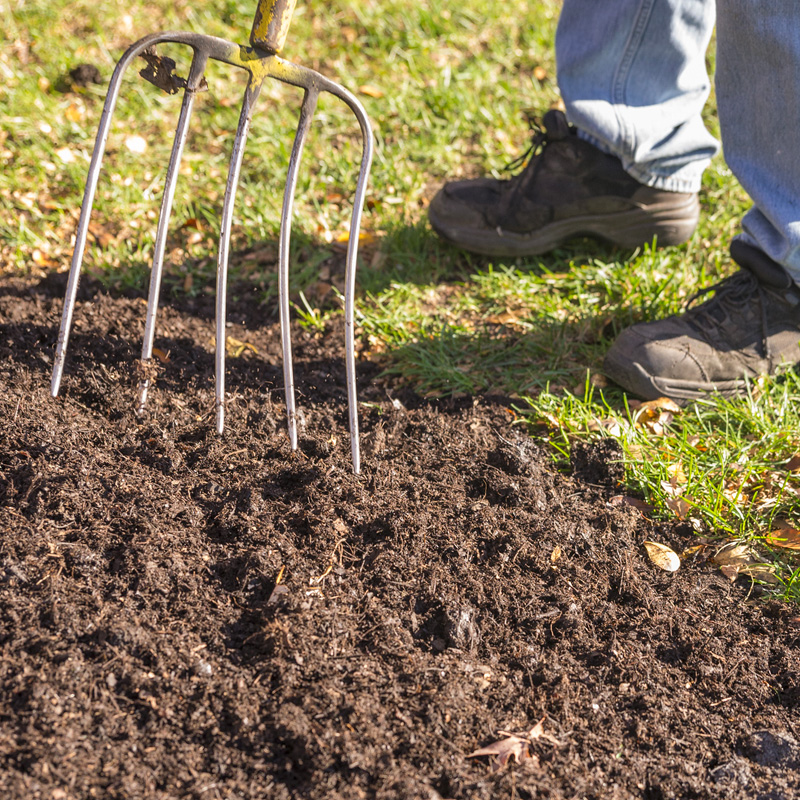
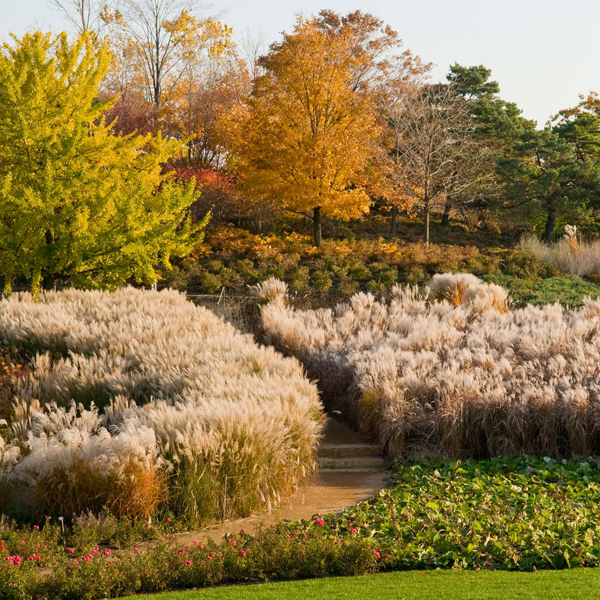
Mulch
Place a layer of mulch around trees, shrubs, and in planting beds to maintain an even soil temperature. This helps to reduce the freeze-and-thaw cycles that cause perennials to heave out of the soil, exposing their roots to freezing temperatures and desiccating winter winds.
Microclimates
Terrain and structures affect how quickly plants may be damaged by cold temperatures. For example, some areas of a garden that are protected by walls, a dense evergreen hedge, or solid fences, may be slightly warmer than spots that are out in the open. Hilltops can be especially cold and windy, while low areas and ravines tend to collect cold air. Warm air rises while cold air sinks, so a garden at the bottom of a slope may have frost pockets and tender or half-hardy plants will be damaged sooner than plants that are in protected spots.
Nina Koziol is a garden writer and horticulturist who lives and gardens in Palos Park, Illinois. Photos by Ellen Hodges.

